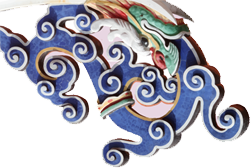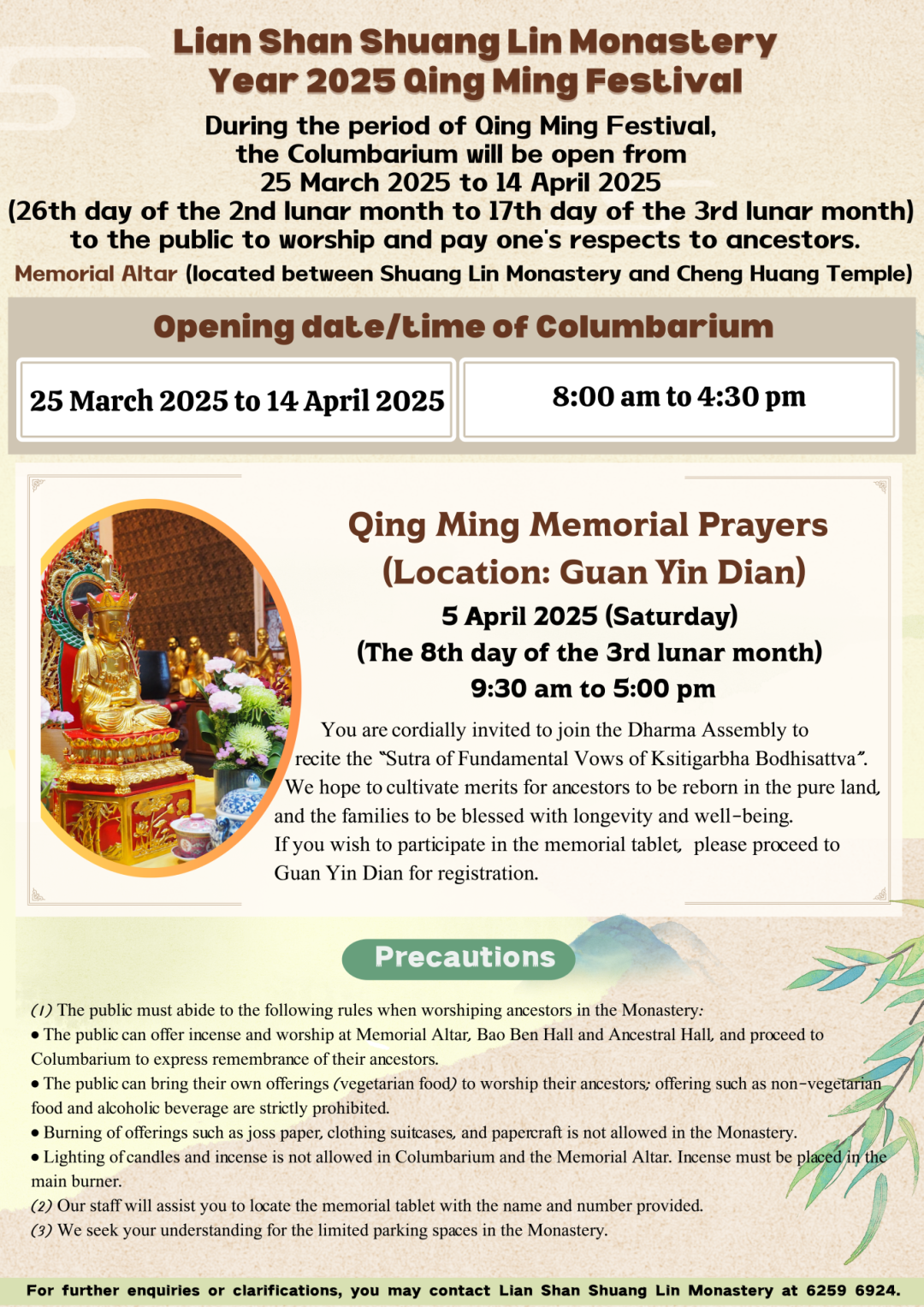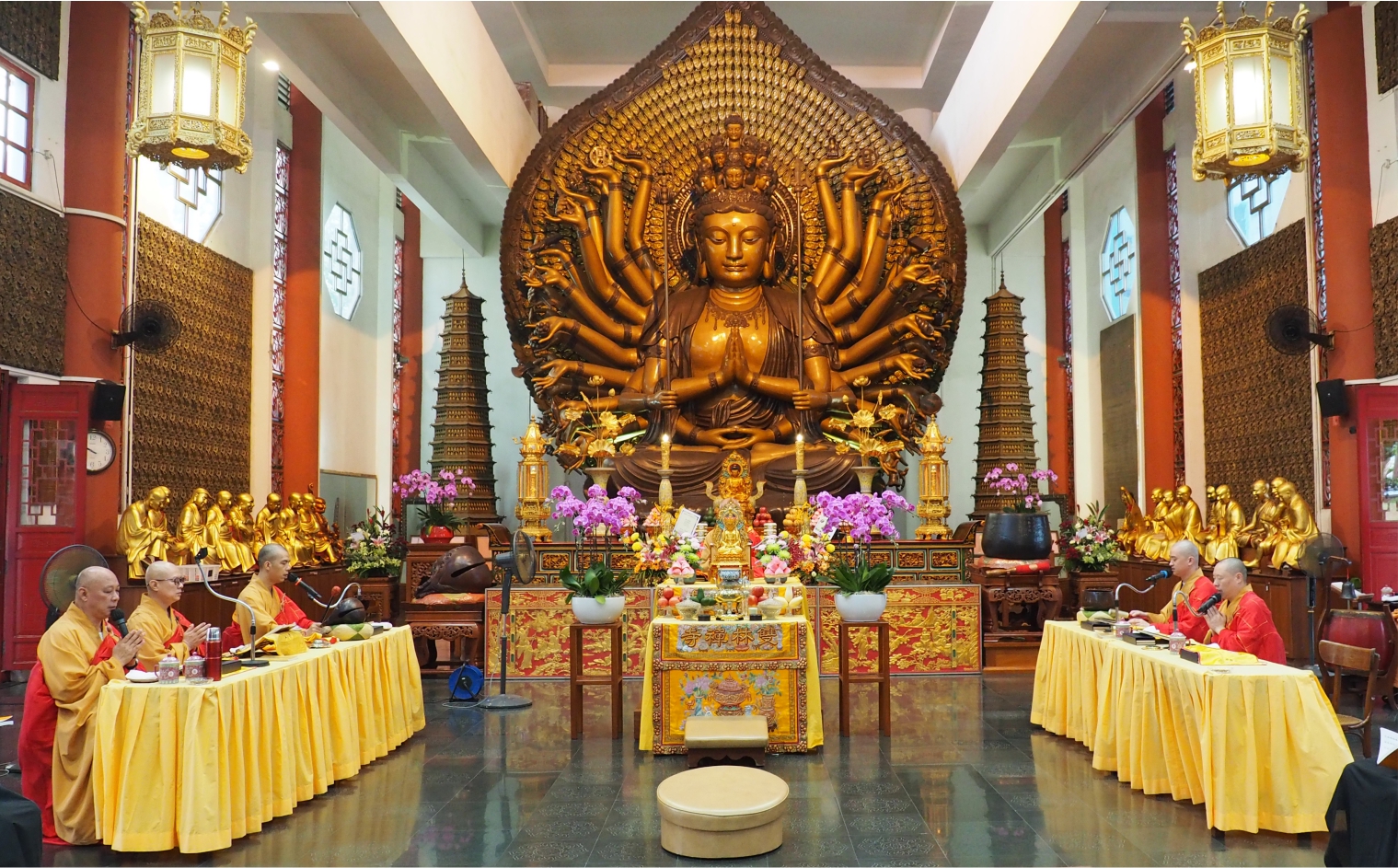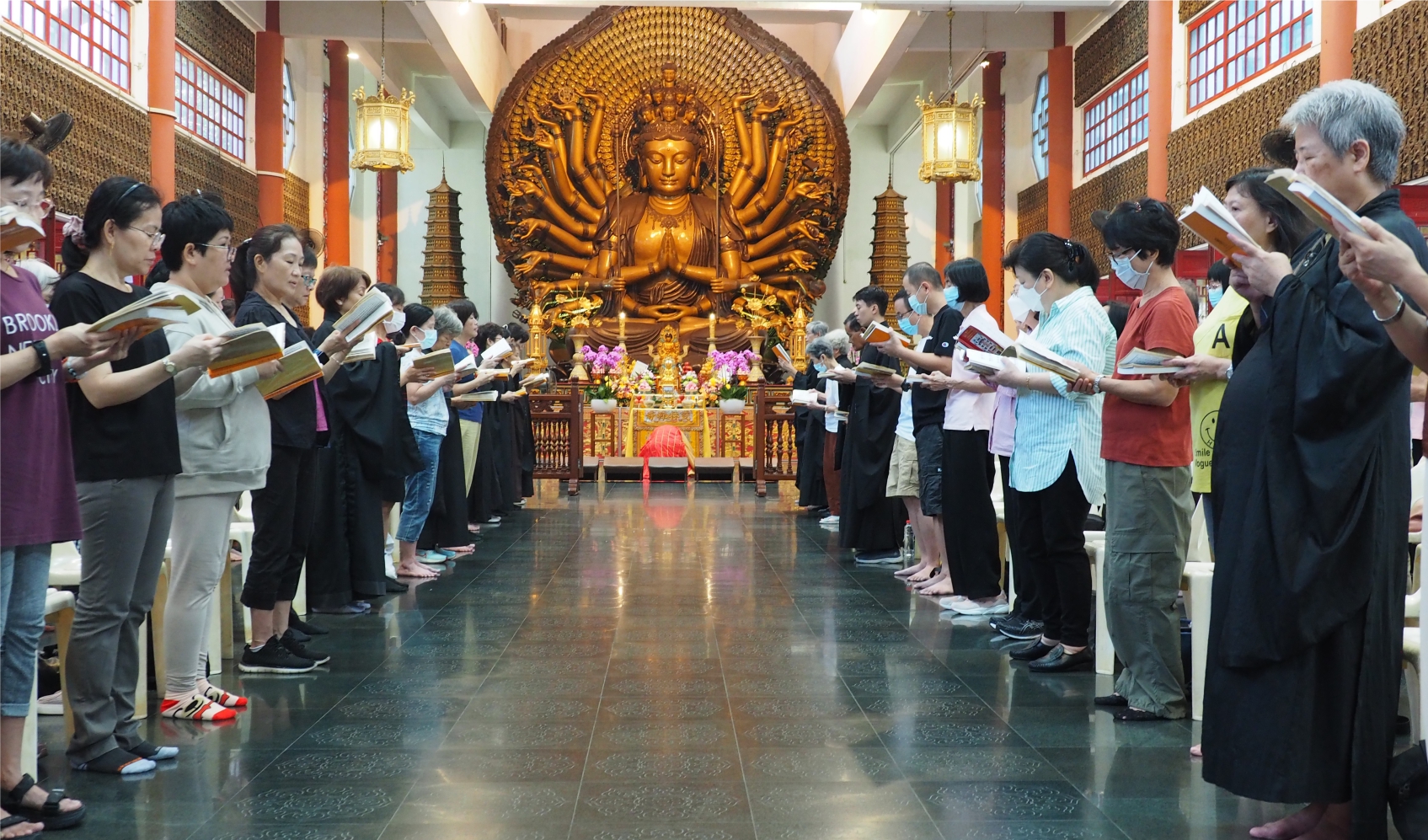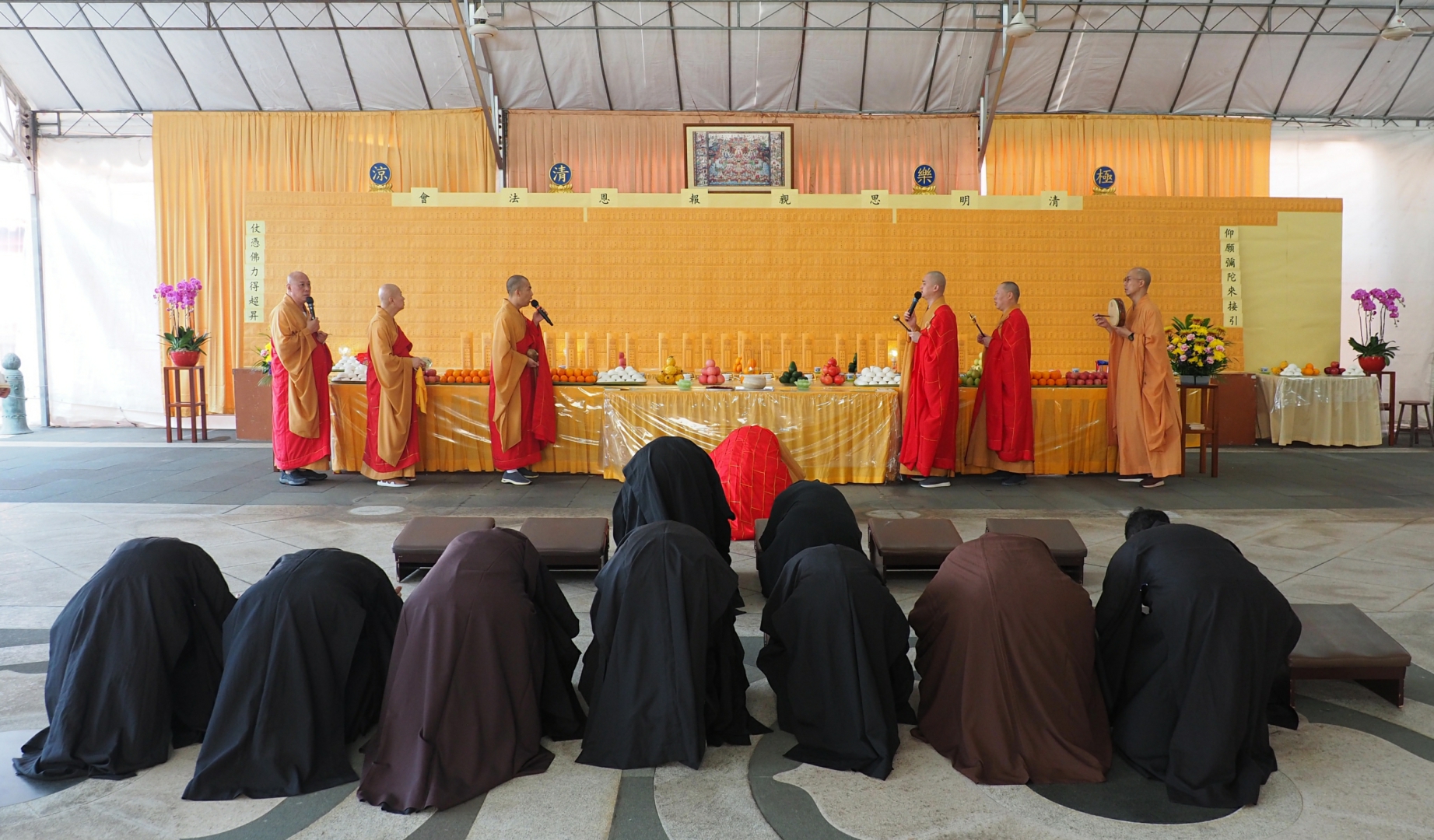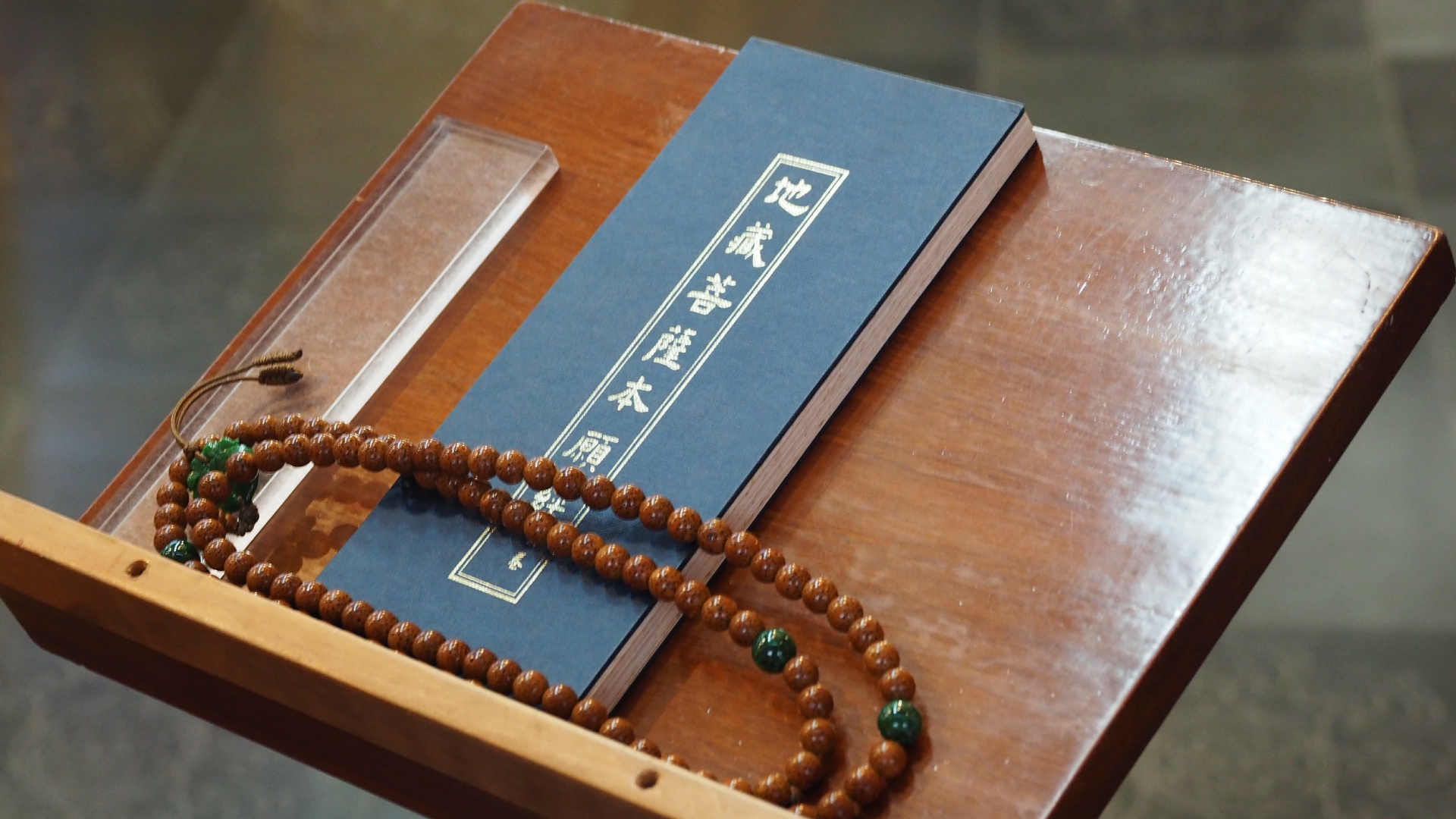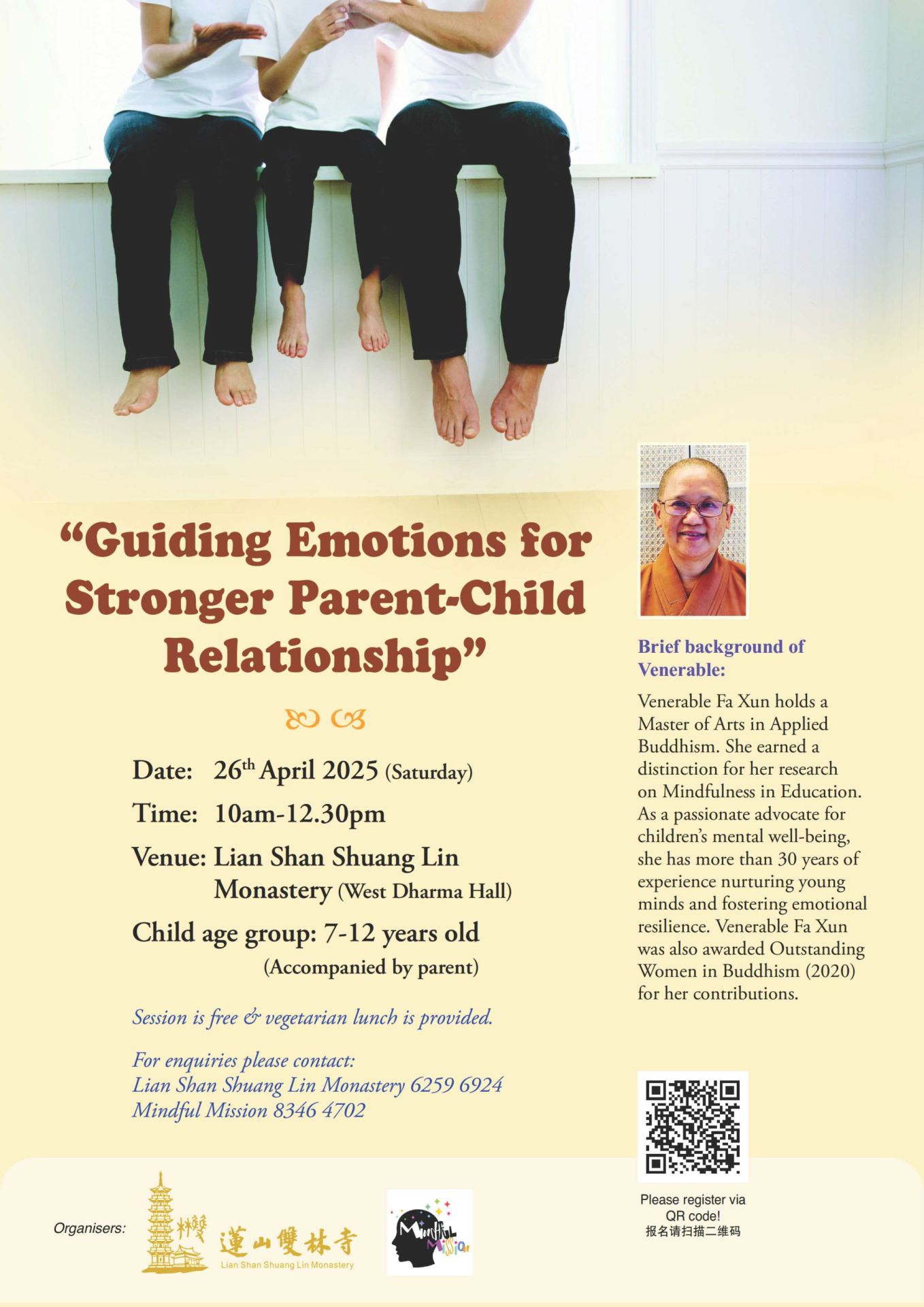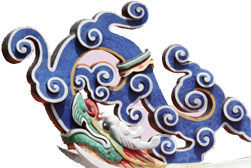In 1954, Master Tham Sean was appointed Superintendent of the monastery. In 1957, for the sake of commemorating the 2300th anniversary of Qu Yuan’s passing, more than 30 local poets collaborated with 2 poets from Hong Kong to hold a “poetry gathering” on the day of dragon boat festival, and to garner enough support for the establishment of a Singapore press for the benefit of general public.
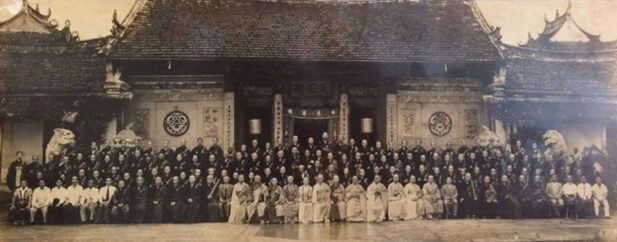
Ceremony of Conferring the Precepts held in 1958
To celebrate the monastery’s 60th anniversary, Master Gao Can (高参法师) held a large scale ceremony of conferring the precepts on the lunar April in 1958. He was appointed the preceptor of the ceremony, the very first and only ordination ceremony held in Singapore so far. In the same year, master set up a “Nanyang Shaolin Martial Association” in Shuang Lin monastery. When Master Gao Can passed away in 1960, his disciple Master Yong Chan helped to manage the monastic duties.
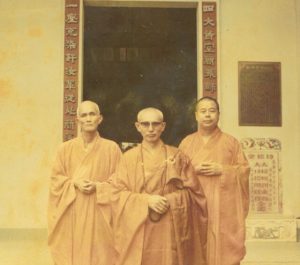
Venerable Long Gen with Venerable Tham Sean (right) and Venerable Yong Chan (left)
In 1969, Shuang Lin Monastery celebrated its 71th anniversary of founding. In the beginning of that same year, Venerable Long Gen, the abbot of Leng Foong Prajna Temple, shut himself off from the outside world to enter into a reclusive meditation. After the ceremony, Master Tham Sean and Master Yong Chan escorted him to the Meditation room. On the 21st September of the same year, a number of Buddhist organizations from Singapore and Malaysia collaborated to hold a memorial service in memory of Master Zhèng Liáng, the elder of Chinese Buddhism in Vietnam.
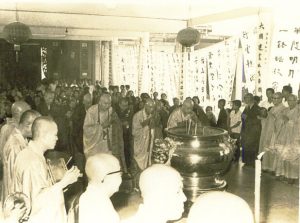
Memorial Service for Elder Zheng Liang from Vietnam
On the day of the memorial service, Shuang Lin Monastery was packed with many Buddhist monastics, lay followers and Sangha representatives from all over the world. Among them were Venerable Bái Shèng, the representative of World Buddhist Sangha Council, Venerable Hóng Chuán, the representative of Singapore Buddhist Federation, Venerable Běn Dào, the representative from Malaysia, Venerable Yen Pei, the representative from Taiwan, Venerable Shòu Dě, the representative from Vietnam, Venerable Yōu Tán, the representative from Hong Kong Buddhist Sangha Association, Venerable Fǎ Liàng, the representative from Cambodia and Venerable Guǎng Yì, the representative from Singapore Sangha Association. Besides Venerable Guǎng Qià, Venerable Cháng Kǎi, Venerable Miào Dēng and Venerable Qīng Kǎi also came to mourn the death of this most eminent and venerated master in Buddhism. When the memorial service was over, Shuang Lin Monastery donated all donation received as gratuities to seven charity organizations, particularly those that offered free medical health service to the public.
At the end of the year, the “Thousand-Buddha Pagoda Construction Committee of Shuang Lin Monastery” was set up for the project to build a nine-storey high pagoda on the eastern wing of the Hall of Celestial Kings.


